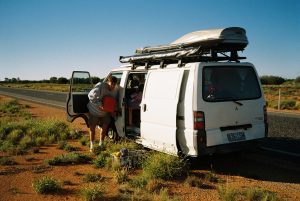
There are few places on the planet as vast and desolate as Outback Australia, trumped only by the polar continents and the Sahara desert. Lonely roads cut through swathes of scorched land for days on end and hundreds of kilometres lie between gas stations. The wide horizons showcase some of the most dazzling night skies I have ever seen. My friend and I travelled the long way from Cairns to Melbourne, 5000 km through the arid heart of Australia, and we were captivated from start to finish of our Australian road trip.
We had done our research and armed my little Mitsibushi camper with the essentials – a load of food and water, a spare tyre, jack and wrench, a map and a jerry can full of spare fuel. Mobile connection is hard to come across out there but we were sticking to the sealed roads where there’s a much higher chance of seeing people if you break down. We planned our route and hit the road. It was an ordinarily hot and humid day in the tropical north and we welcomed the breeze as we zoomed along to our first stop for the night.
Our second day saw the land and air become drier and people become more scarce before we hit the industrious mining town of Mt Isa. Its chimney was visible amongst a rocky landscape from miles away, a landmark of civilisation in an otherwise unoccupied region. The mining site rises ominously over the town like a movie set, visible from almost anywhere you are within the town. We continued on to find somewhere less urban to camp for the night.
The next place on the map was a small town called Camooweal, the last on the Barkly Highway before the border between Queensland and the Northern Territory. The road weaved between red rock spotted with intense green until we hit the grasslands which surround Camooweal. We arrived in plenty of time for the sunset and sat with a beer in hand watching the sun cast the lonely town in its final golden hue.
The next morning was when we really discovered the Outback. It was a clear and sunny day and we’d smoked a joint before getting back on the road. Camooweal had only just disappeared amongst the grassy plains behind when we looked around and saw the sky had completely opened up around us. The land had flattened out so far in all directions that a crisp horizon spanned 360 degrees. We stopped at the border to take it all in.
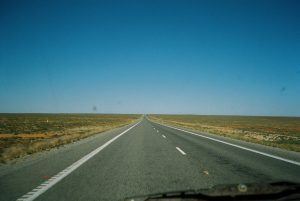
The highway stretched to the horizon in both directions and we chased it west into the heart of the Northern Territory. Grassland slowly turned into desert, and eventually, we reached the intersection of the Stuart Highway – right to Darwin, left to Adelaide. We stopped to grab some beers at Tennant Creek, another eerie town standing alone in the desert, before heading on to find a camp. We had been told of the Devil’s Marbles as a good place to spend the night, and I couldn’t recommend it enough myself. Huge, granite boulders, rounded from thousands of years of weathering, sit in the desert like marbles dropped from the sky. We sat with a beer watching their red colour intensify as the sun set behind the valley.
The days were hot but the nights were cold, and the only way we could sleep was by huddling together in the van for warmth. A sleeping bag each would have done the trick but we had underestimated the nightly temperature drop in the desert. After a shoddy night’s sleep, we got back onto the Stuart Highway.
We spent long days on this road, taking it in turns to drive for a few hours while the other got high in the back and took care of the music. It was imperative that we knew how many kilometres the van did per litre of fuel so that we could gauge how far we had at any one point until we needed to stop. You also have to take into account the fact that the strong winds which blow across flat plains increase your fuel usage. Pretty much every petrol station has a sign notifying drivers of the distance to the next one. At every stop, we had to make use of the windscreen cleaning tools available to wipe away the remains of the hundreds of bugs which covered the glass.
I was surprised to see so much life in such a barren and flat environment. Small flocks of beautiful birds danced between the shrubbery and wedge-tailed eagles – huge, stern-looking birds with dark feathers and black eyes – fed on the kangaroos killed on the highway. A trail of tragedy left by the trucks and road trains which hurtle along the empty roads at night. We didn’t hit any kangaroos, though we did hit a number of little birds which flew unknowingly into our path. Quite a horrible experience actually. I remember seeing one of these poor things lodged in the bullbar of a truck.
We made it to Alice Springs on day 4, but, having been notified during an encounter with the police back on day 1 that the town was ridden with crime (“Haven’t you heard the news?”, they had asked), we merely had lunch there, keen anyway to sleep in the countryside under the stars. So from there we hurtled over to Uluru to catch the sunset. It was a bit of a disappointment because the site is a paid-entry national park which doesn’t allow camping, so we sacked it off and found a rest area with a good view of the rather similar-looking Mt Conner. We sat on fine, dark red sand and watched dusk take hold of the desert. Little did I know, the next day was to bring one of the most incredible moments of my life.
It happened to be the day 4/20. We hadn’t realised, but still, we found ourselves smoking a joint at a viewpoint. This time we had our feet dangling over the impressive Kings Canyon, 4 hours up from Uluru. The ridges of the canyon rise high over the desert and lead you through stacks of red rock, smoothed and hardened over millions of years. It felt almost extra-terrestrial, but I guess much of Outback Australia has a very Martian look to it.
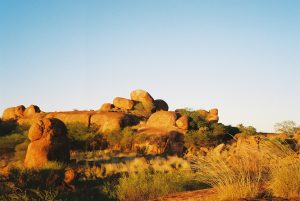
We bumped into another couple there also lighting a spliff, and they asked if we were there for the lunar eclipse. I hadn’t known there was to be one, but a lunar eclipse isn’t as special as the more renowned solar eclipse anyway. So, having finished the joint and taken in the view, we headed back to the van for some lunch and headed out.
It was only because I finally decided to stop and find a rubbish bin halfway out that I ran into the 3 Germans all looking up at the sky. I went to ask them what they were doing, and they passed me a set of strange-looking sunglasses and told me to look at the sun. I did as they said, and found myself with my mouth wide open, I was looking at a partial solar eclipse; the moon was covering the sun about halfway. It would have been completely covered looking at it from the west coast of Australia, but we happened to be far enough over in the centre of the country to see it in part.
The sun was still so strong and the day so bright that you couldn’t tell anything was different, but we drove away under the eclipse with a new sense of happiness, knowing that everything in our life so far had led to that moment.
We soared down into South Australia, where the ever-barren land began to undulate like huge waves in the ocean. The highway led us to Coober Pedy, a mining town well-known for its opal production. The surrounding plains are littered with little dirt mounds as far as the eye can see; it’s no wonder they hold the crown for opal production in Australia, and indeed the world.
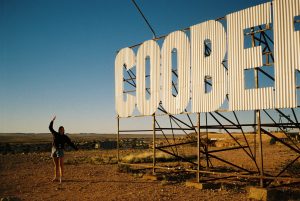
The town itself was quite surreal, not least for its ‘Coober Pedy’ sign sitting on top of the town looking out into the desert. An underground hotel offers a glimpse into the way of life of opal hunters, who took advantage of lower temperatures underground. The “dugouts”, as they were called, stay at temperatures of 23-25C regardless of the conditions outside, and are still used today to escape the sun in a land where shade is scarce.
The desert accompanied us most of the way down through South Australia towards Adelaide, but as the climate changed, the undulating plains slowly evolved into the flourishing hills of Adelaide’s wine district. Autumn gripped the countryside that far south at that time of year; we had travelled from the tropical summer of the north through the arid plains of Outback Australia to the encroaching winter in the south. It was around this point, however, that we noticed the van making a weird noise, and a mechanic said that without any work we didn’t have long before she’d stop driving. We made a b-line for Melbourne.
She made it, thankfully, but in desperate need of a new clutch. The trip ended up costing us a lot more than we had predicted; we hadn’t anticipated the desert winds increasing our fuel usage and we were naively unaware of the higher fuel costs associated with filling up in the middle of nowhere. However, I did get out of it a 5000 km drive through the Australian Outback laced with moments that I’ll never forget.
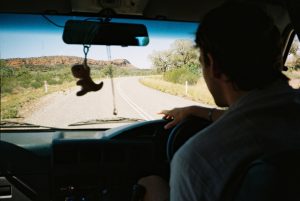
If you loved reading Alfie’s experience of his Australian road trip then head to our home page HERE to find more guest blogs!
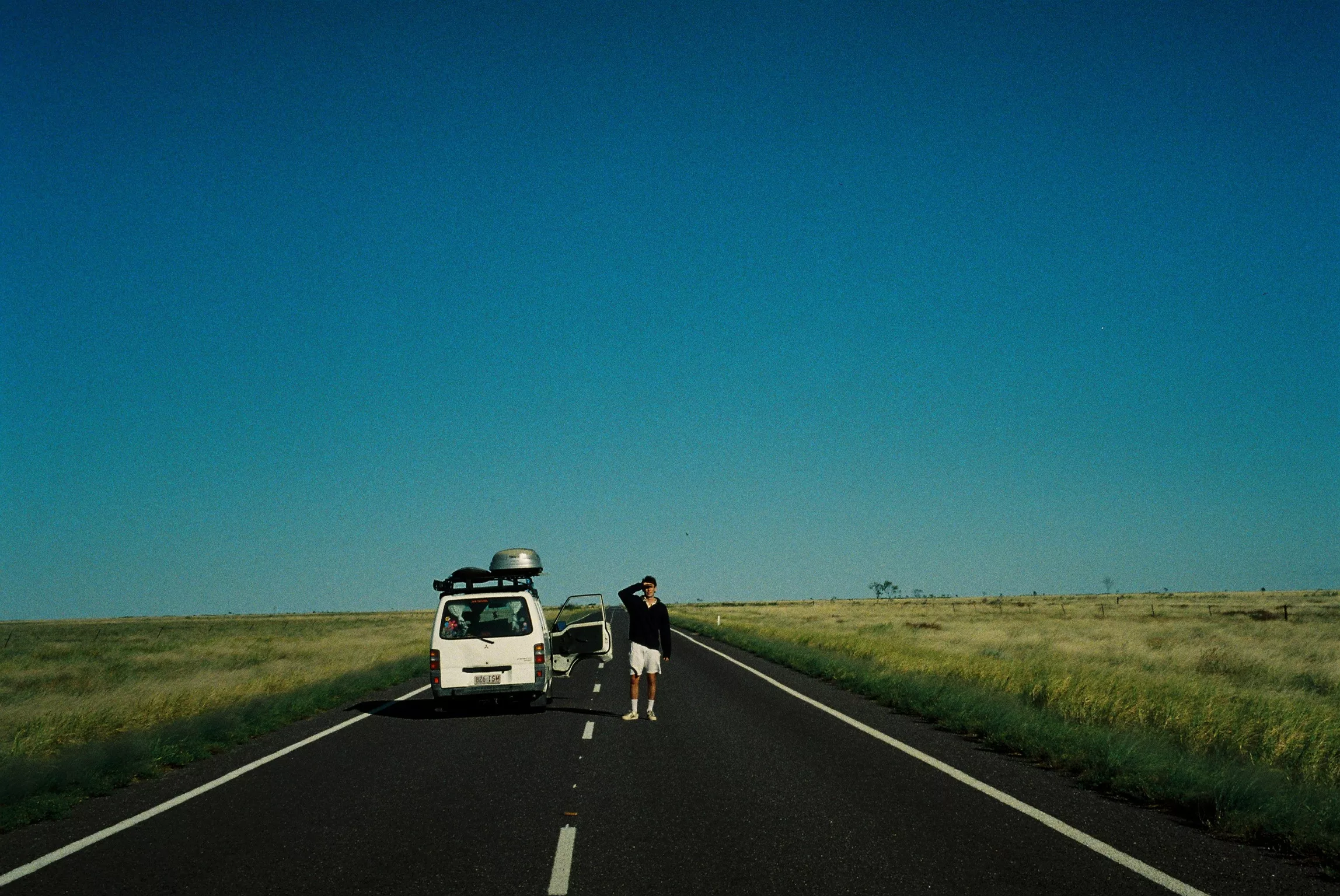
Leave a Reply